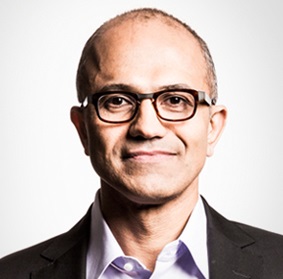Microsoft continues its pivot to being all about cloud services

There's a growing disconnect between what Microsoft watchers and many existing users think matters to the future of the company, and what Microsoft execs and Wall Street seem to believe to be important.

Microsoft's second quarter results for its fiscal 2016 made this clear. Many industry pundits and existing customers couldn't help but notice Windows Phone Lumia sales had fallen to an all-time low (4.5 million Lumia phones sold between October 1 and December 31, 2015), and Surface tablet and laptop sales had risen to an all-time high -- some unknown number of units worth $1.35 billion for that same period.
But the Softies and Wall Streeters really wanted to talk about were Azure revenues, Office 365 commercial and consumer sales, Xbox Live and game sales and, as CEO Satya Nadella mentioned numerous times on Microsoft's January 28 earnings call, the Microsoft Enterprise Mobility Suite.
(Enterprise Mobility Suite, or EMS, for those who don't know, is Microsoft's suite of services for managing mobile Windows and non-Windows devices and the content on those devices.)
Microsoft reports its financials these days in three buckets: Intelligent cloud (Azure, EMS and other cloud services plus enterprise software and services), Business and Productivity (Office 365 and Office apps), and More Personal Computing (Windows, first-party hardware and Search). The biggest of these divisions remains More Personal Computing, from a revenue standpoint, though it's the smallest from a profit standpoint.
exclusive
Yes, Microsoft reported that it sold a sizable number of Surface Pro 4s and Surface Book laptops in its fourth quarter and expects to sell even more as distribution worldwide for these devices expands.
Yet what did Nadella call out during today's earnings call as being the keys to the company's Windows and devices strategy? Device management (a k a, the aforementioned EMS); services around its unified platform (Store, search and gaming) and the creation of new device categories with its OEMs.
We in the tech media pay a lot of attention to every twist and turn on the Windows operating system front, but Microsoft's top brass and Wall Street seemingly are far more focused on the services that attach to Windows and/or are sold on top of Windows than on Windows itself.
Microsoft and Wall Street are also very focused on the 140 percent growth (in constant currency) in Azure and, specifically, Azure premium services. When Microsoft talks about Azure Premium, officials mean any of the myriad Azure-hosted services that run on top of the basic compute, networking and storage services that make up the guts of the Azure platform. This means everything from Azure Media Services, to Web Services, to the Cortana Analytics Suite and more.
And they're also attuned to the growth in Office 365, Office apps for iOS and Android (340 million downloaded this quarter), and Outlook for iOS and Android (now up to 30 million active users).
Sure, some will say that Microsoft execs don't want to draw attention to the continued tanking of Windows Phone and slowing PC and tablet markets, hence the focus on services. But Microsoft execs claimed to be positively surprised about the performance of the phone segment this quarter.
Even with Microsoft's decision to cut many former Nokians who joined the company following the controversial decision for Microsoft to buy Nokia's handset division, cut way back on the number of Windows Phones the company would field, and basically put Lumias on barely-existent life support until Microsoft's next phase of its mobile business materializes (Surface Phone and/or other ARM- and/or Intel-based form factors?), Microsoft execs claimed they viewed the terrible Windows Phone performance this quarter as a bit better than expected.
The part of the business I'm most curious about, as things move forward, is Microsoft's plan to monetize the services that are "attached" to Windows.
We saw a bit late last year about Microsoft's revamped plans to try to wring more money from OneDrive. But what about Skype (consumer) and Outlook.com? Ads are key to how Microsoft expects to make money from Bing/Cortana search. And games, like the $54 Rise of the Tomb Raider game -- which, by the way, is a Universal Windows Platform app -- Minecraft and other new paid games and services are no doubt key to the company's money-making plans moving forward, too.
Microsoft isn't giving up on Windows and Windows-powered devices; it's still trying to find ways to continue to make/keep them relevant. But the future of Microsoft increasingly is hinging on cloud and subscription services.